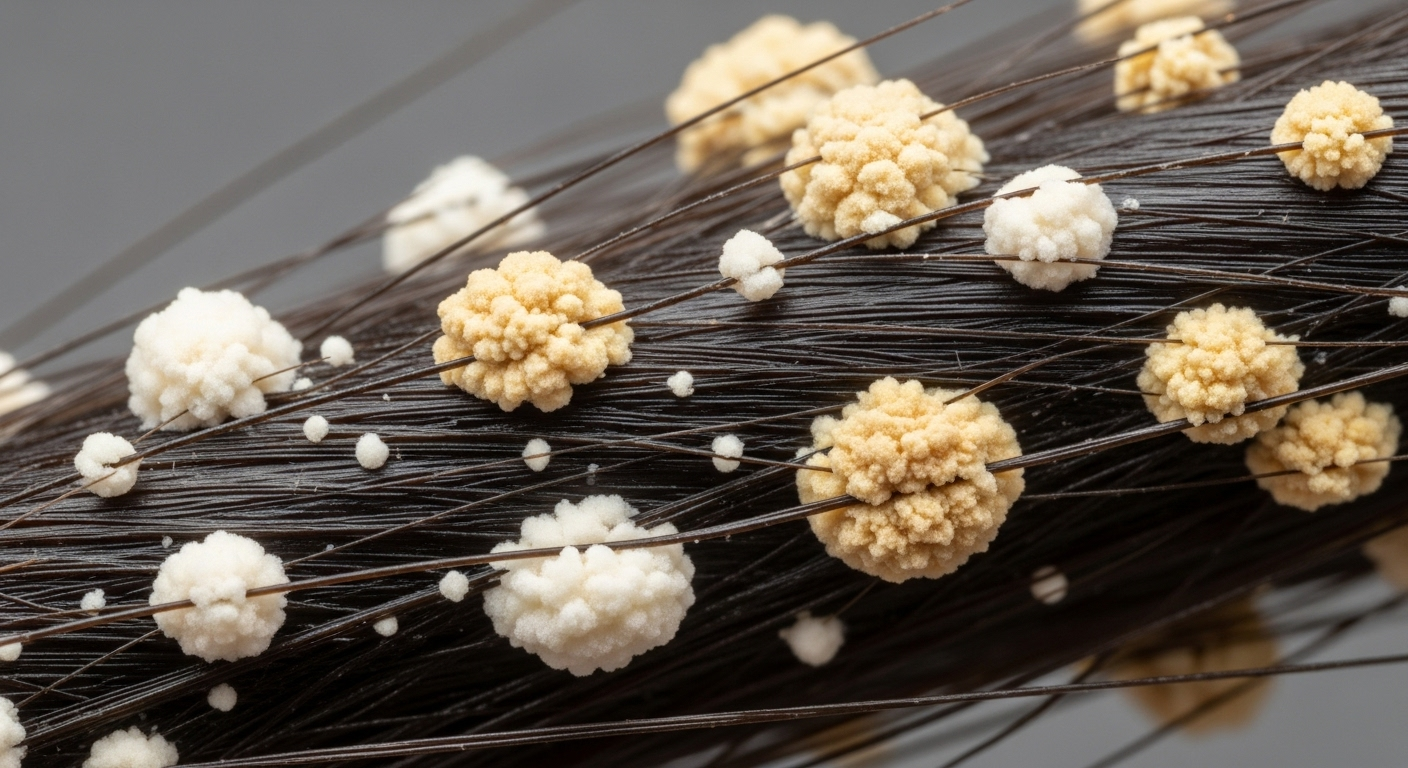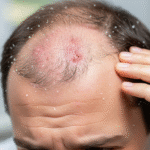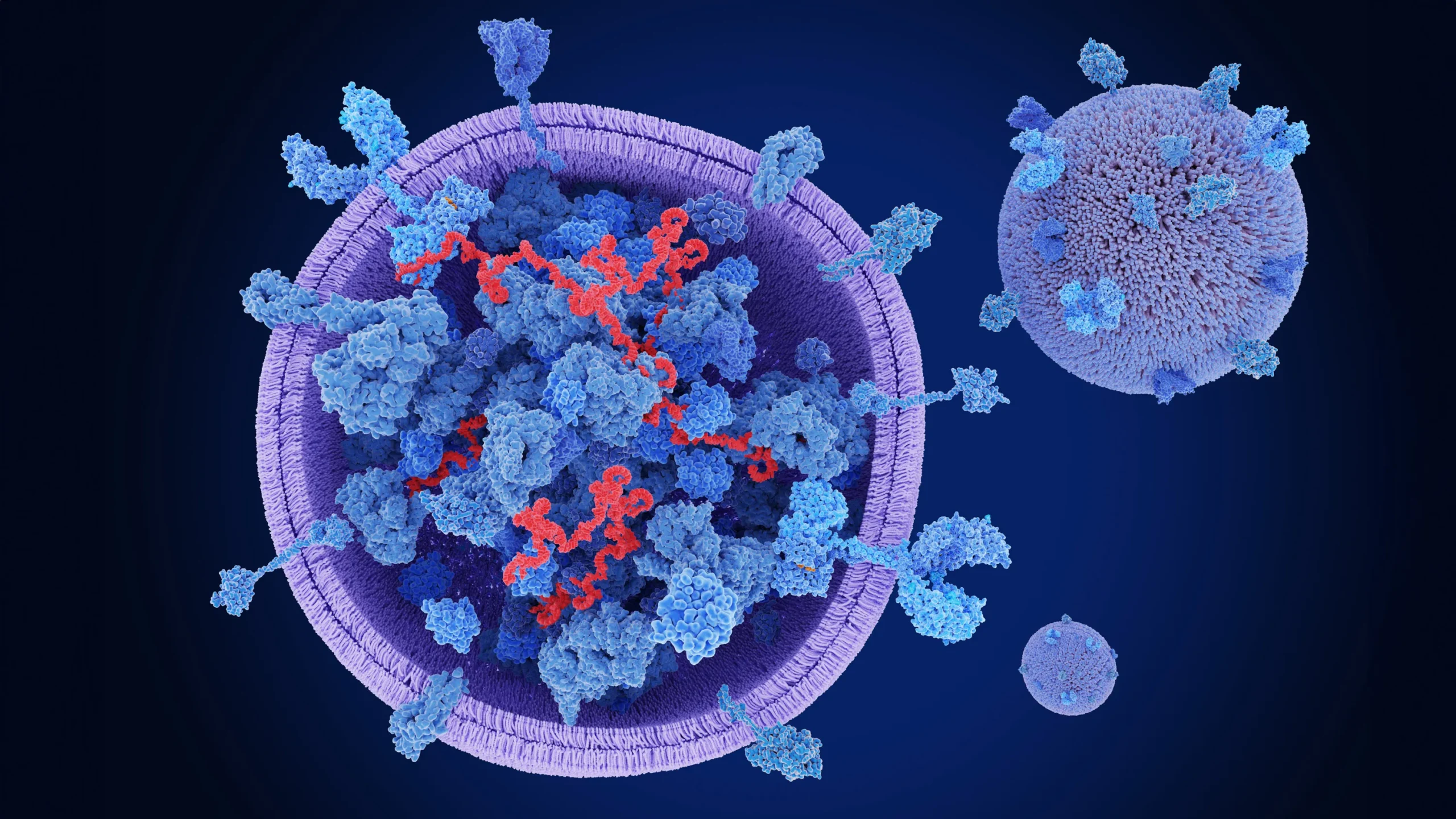White piedra is a fungal infection that affects the hair shaft, causing small white or light-colored nodules to form along the hair. If you've noticed unusual lumps or growths in your hair, you might be dealing with this infection. In this article, we’ll explore the causes of white piedra, its symptoms, and the most effective …
White piedra is a fungal infection that affects the hair shaft, causing small white or light-colored nodules to form along the hair. If you’ve noticed unusual lumps or growths in your hair, you might be dealing with this infection. In this article, we’ll explore the causes of white piedra, its symptoms, and the most effective treatments.
By the end of this post, you’ll know how to identify and treat this condition to maintain healthy hair and scalp.
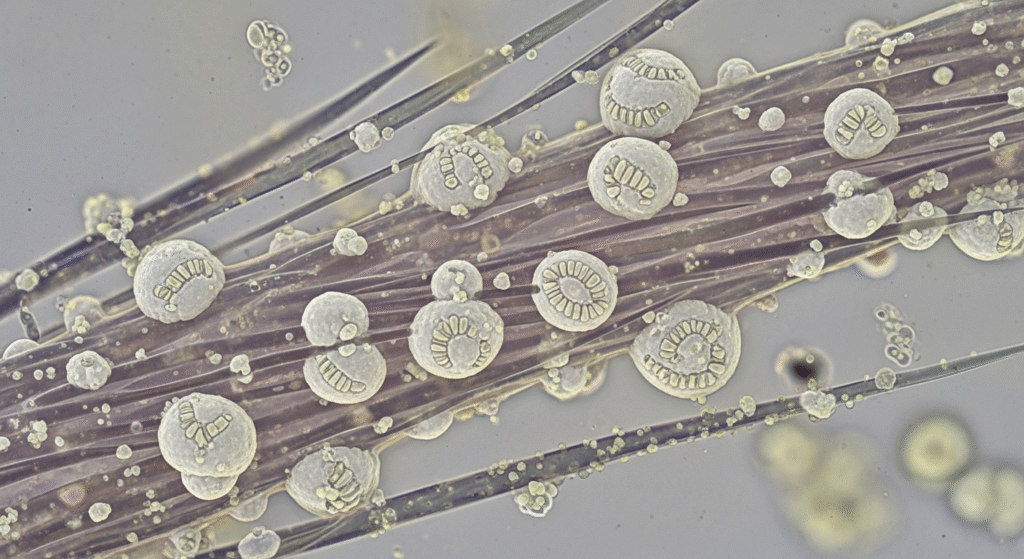
What is White Piedra?
White piedra is a superficial fungal infection of the hair shaft caused by Trichosporon fungi. This infection results in the formation of white, gritty nodules that cling to the hair, often giving it a matted or unkempt appearance. White piedra most commonly affects hair on the scalp, but it can also affect body hair, including facial hair and pubic hair.
- White vs. Black Piedra:
While white piedra appears as light-colored nodules, black piedra causes dark, hardened lumps on the hair. Both conditions are caused by fungal infections, but the treatment approaches differ depending on the type of piedra. - How Does White-Piedra Develop?
This fungal infection thrives in warm, humid environments, often exacerbated by poor hygiene, tight hairstyles, or the use of shared hair tools. The infection affects the hair shaft itself, making it more prone to breakage and thinning.
Causes of White-Piedra: What Leads to This Fungal Infection?
White piedra is primarily caused by the Trichosporon genus of fungi. Several factors contribute to the development of this fungal infection:
- Fungal Growth:
The infection is typically caused by fungi that grow on the scalp, often due to the accumulation of moisture and sweat. Trichosporon fungi are opportunistic pathogens, meaning they thrive in environments where the scalp is not properly cleaned or dried. - Poor Hygiene:
Infrequent washing of hair, improper hair care, or using contaminated hairbrushes or combs can lead to fungal infections. Not washing hair regularly can create a perfect breeding ground for fungi. - Humidity and Warmth:
Fungal infections like white piedra are more common in hot, humid climates. The increased moisture in the air allows fungi to proliferate on the scalp. - Weakened Immune System:
People with a weakened immune system, whether due to illness or medications, are more susceptible to fungal infections like white piedra. Immunocompromised individuals should take extra care to prevent such infections. - Shared Hair Tools:
Sharing combs, brushes, or hats with an infected person can spread the fungus, as it thrives in shared environments and on surfaces like hairbrushes.
Symptoms of White-Piedra: How to Identify the Condition
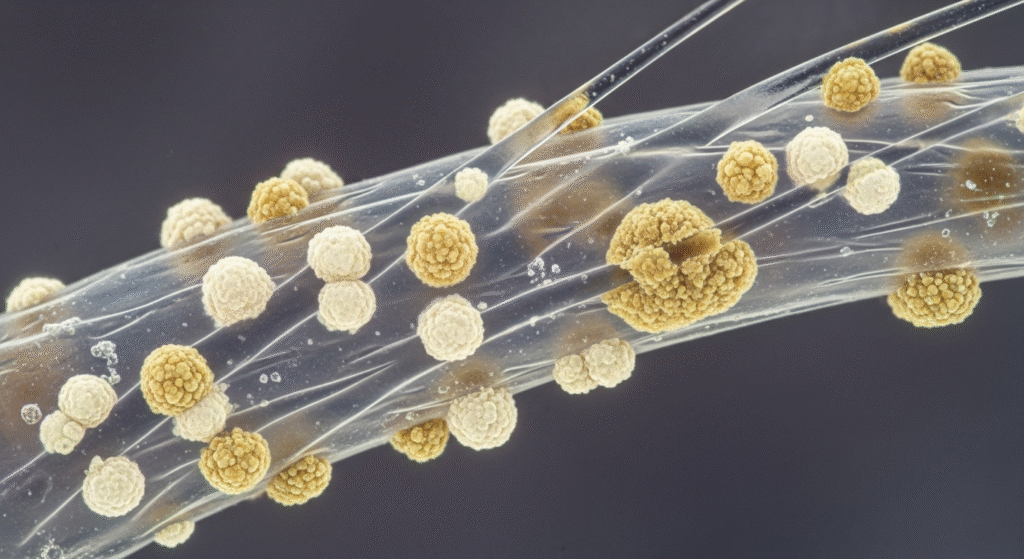
White piedra is usually easy to identify once the symptoms appear. Here are the key signs to look out for:
- White Nodules on Hair:
The most obvious symptom is the presence of white or light-colored nodules along the hair shaft. These nodules are typically gritty or chalky in appearance and are firmly attached to the hair. - Hair Weakening and Breakage:
Affected hair often becomes weak, brittle, and prone to breaking. The fungal infection can cause the hair to lose its strength, leading to breakage and thinning. - Scalp Itching:
Itching or mild discomfort may occur on the scalp, although this is not as severe as with other scalp conditions like dandruff or seborrheic dermatitis. - Changes in Hair Texture:
Hair affected by white piedra may feel rough or coarse to the touch, and the infection can cause areas of the scalp to feel tender when touched.
Diagnosing White Piedra: When to See a Doctor
If you suspect you have white piedra, it’s important to get a professional diagnosis. Here’s how the condition is diagnosed:
- Physical Examination:
A dermatologist can diagnose white piedra by visually inspecting the hair. The distinctive white nodules are usually easy to identify. - Microscopic Examination:
The doctor may take a hair sample and examine it under a microscope to confirm the presence of Trichosporon fungi. - Differential Diagnosis:
White piedra must be differentiated from other scalp conditions, such as dandruff or seborrheic dermatitis, which may cause similar symptoms like itching or flaking. A thorough medical history and examination are essential for an accurate diagnosis.
Treatment Options for White Piedra: How to Get Rid of the Infection
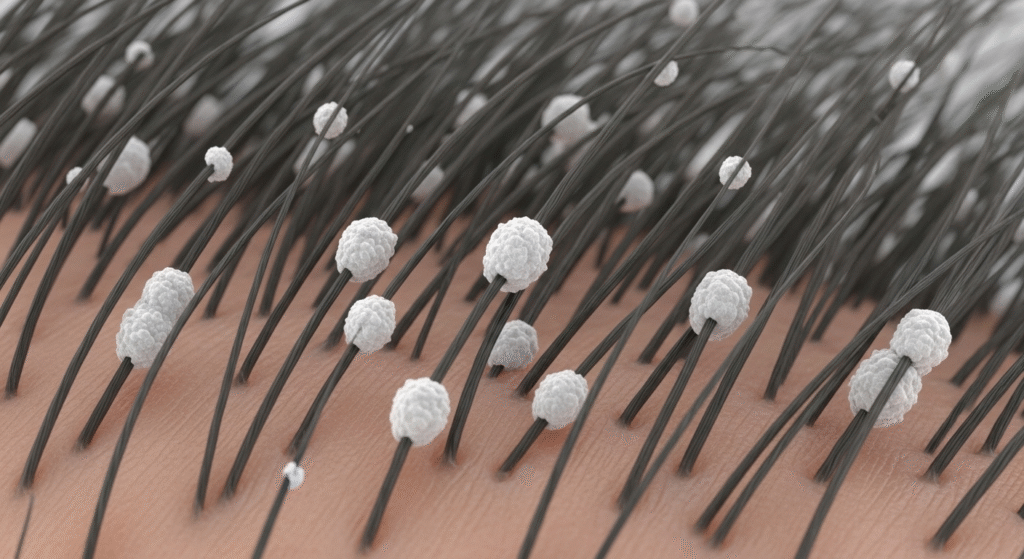
White piedra is treatable with the right interventions. Here are some effective treatment options:
- Topical Antifungal Treatments:
Shampoos containing antifungal agents like ketoconazole, miconazole, or selenium sulfide can help eliminate the fungus from the scalp. These treatments should be used as directed by a healthcare professional to ensure they are effective. - Oral Antifungal Medications:
In more severe cases, oral antifungal medications like itraconazole or fluconazole may be prescribed to fight the infection from within. - Proper Hair Care:
- Regular Washing: Use an antifungal shampoo to wash your hair regularly. This helps keep the scalp clean and free from fungi.
- Avoid Tight Hairstyles: Refrain from pulling the hair too tightly, as this can irritate the scalp and make the infection worse.
- Hair Cutting and Trimming:
In some cases, trimming or cutting the infected hair may be necessary to remove the fungus and prevent it from spreading to healthy hair. - Preventive Measures:
- Personal Hair Tools: Never share combs or brushes with others. Regularly disinfect your hair tools to prevent fungal contamination.
- Dry Hair and Scalp: After washing, make sure your hair and scalp are completely dry before styling. Avoid leaving wet hair in a damp environment, which encourages fungal growth.
Preventing White Piedra: How to Protect Your Hair and Scalp
Preventing white piedra is possible by adopting good hair care habits. Here are some tips to keep your hair and scalp healthy:
- Maintain Hair Hygiene:
Wash your hair regularly with antifungal shampoos, especially if you live in a humid climate or have an oily scalp. - Avoid Tight Hairstyles:
Tight ponytails, braids, and buns can cause friction on the scalp and may promote fungal growth. Opt for looser hairstyles to avoid stressing the hair. - Personal Hygiene:
Avoid sharing hair tools with others, and always use personal towels. Make sure your scalp is thoroughly dried after washing. - Boost Immune System:
A strong immune system can help prevent fungal infections. Eat a balanced diet, get enough sleep, and manage stress effectively to keep your immune system in top shape.
FAQs
What is the difference between white piedra and black piedra?
White piedra causes white nodules on the hair, while black piedra results in dark, hard nodules. Both are caused by fungi but require different treatment approaches.
Can white piedra cause permanent hair loss?
White piedra does not typically cause permanent hair loss, but untreated, it can weaken the hair, causing it to break and thin.
Is white piedra contagious?
Yes, white piedra can spread through shared hair tools or personal items like towels, hats, or combs.
How long does it take to treat white piedra?
Treatment can take anywhere from a few weeks to a couple of months, depending on the severity of the infection and the treatment used.
Conclusion: White Piedra and How to Manage It Effectively
White piedra is a treatable fungal infection that affects the hair shaft. With the right diagnosis and treatment, you can eliminate the fungus and restore the health of your scalp and hair. Proper hygiene, antifungal treatments, and preventive measures are key to managing and preventing white piedra.
Book a Consultation for Scalp Health and Hair Treatment
If you’re experiencing scalp discomfort or suspect you have white piedra, don’t wait to seek help. Book a consultation with Dr. Uzma Irfan, an ISHRS-certified surgeon in Islamabad today to get an accurate diagnosis and start the right treatment plan for your scalp health.

